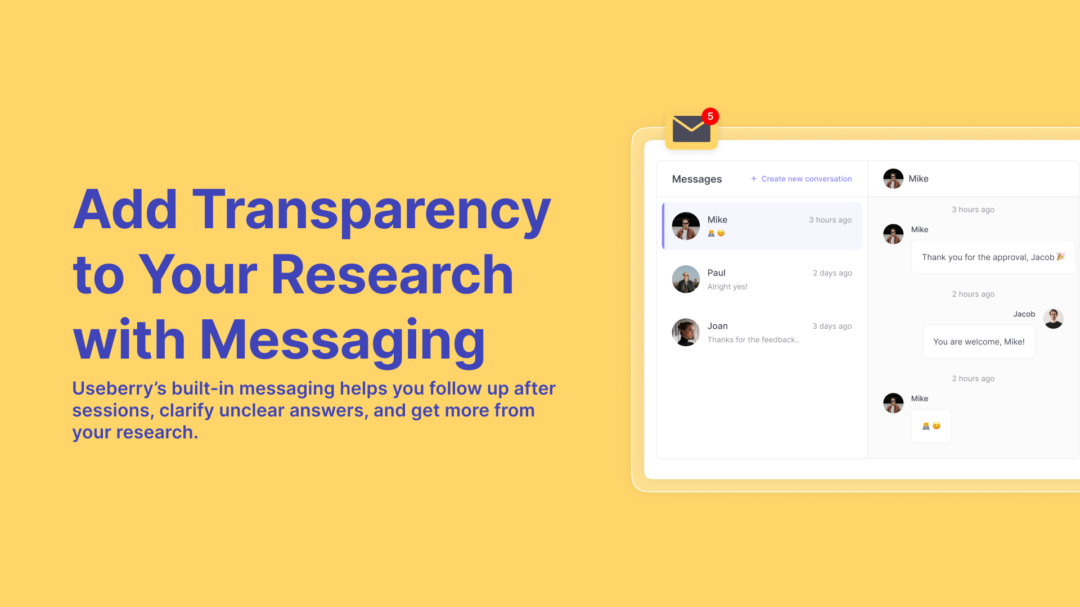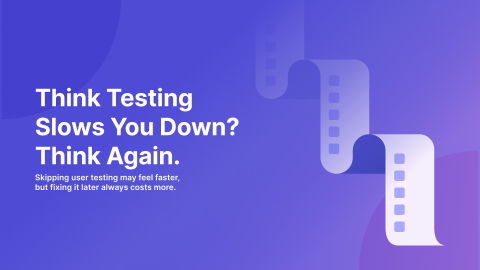We’ve all been there. You’re reviewing a session and something doesn’t quite make sense. Maybe a participant skipped a question. Maybe their answer was too vague to act on. In the past, this is where the process would come to an abrupt end. You’d mark it as unclear, move on, and hope it didn’t skew your findings.
Now, there’s another option: you can talk to them!
Why Participant Messaging Matters
Being able to message participants after a submission might seem small, but it solves a big gap in remote unmoderated testing. Until recently, researchers had no easy way to follow up. And if your research relies on your interpretation of unclear data it blurs the lines of the “you are not the user” motto.
It’s also worth noting that messaging isn’t just for researchers. Prolific originally designed two-way messaging to help participants as well. If they don’t understand a question or run into a technical issue, they can quickly reach out to the researcher for clarification. That means fewer abandoned sessions, faster fixes, and a better overall experience for both sides.

Here are a few real scenarios where follow-up messages can save a session:
- A participant skips a task, and you want to know why
- An answer seems contradictory to an earlier one
- You just want to thank them and maybe invite them to a follow-up study
- You want to know more about their thought process
- Recordings are great! However, when you ask a participant to “think out loud”, your expectations might not match how much the participant thought he should speak out. A follow-up message could fill in the gaps.
Keep It Professional, Clear, and Kind
If you’re using Useberry’s messaging feature, the good news is it’s built into your recruitment dashboard. No hunting for email addresses, no manual outreach… But how you write matters. Here are a few tips:
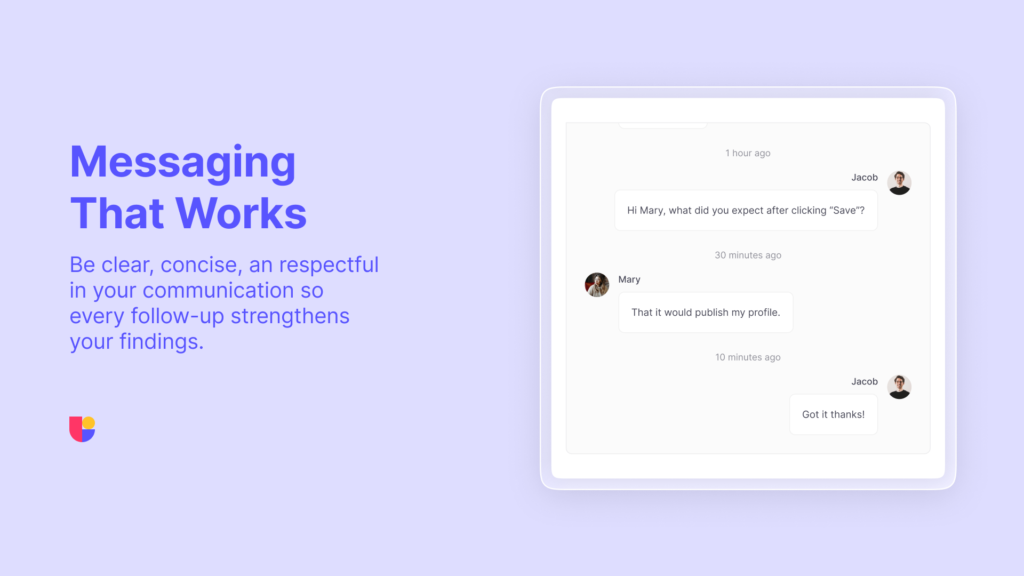
1. Be clear about why you’re reaching out Don’t leave participants guessing. Mention the specific question or task you’re following up on.
2. Be concise Keep your message focused and short. (assuming they already completed their task, let’s not give them another reading assignment😉)
3. Be respectful They took the time to help with your research. Be kind and keep in mind that they might not have realized an answer was unclear or vague.
4. Be timely If a session happened days ago, the participant may not remember the context. Reach out soon after reviewing and give context.
When to Follow Up (and When Not To)
You don’t need to chase down every incomplete answer. Think of messaging as a chance to recover a submission that could be saved with one clarification, which would otherwise be wasted, or to get clarity on something that could strengthen your findings.
If the issue is minor, it might be faster to leave it. If the participants struggle or get confused at a specific point, it is a finding in itself.
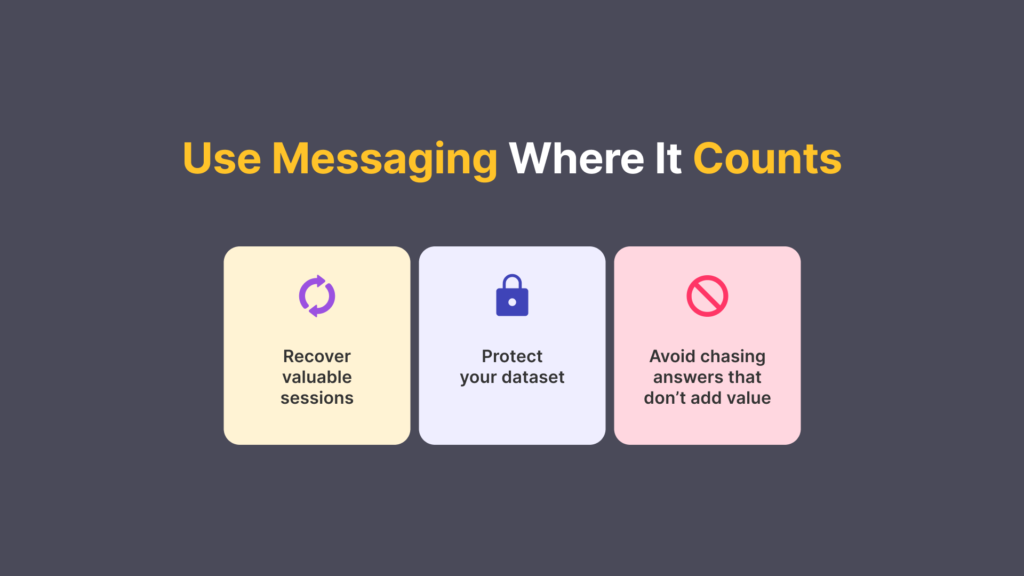
Use it when:
- A submission doesn’t follow your study instructions, and you want to understand why
- An answer is unclear, incomplete, or contradicts earlier responses
- A participant skipped a question, and you want context
- You need to clarify a task outcome before including the data in your results
- The participant’s thought process could add valuable nuance that isn’t in the recording
Avoid follow-up when:
- The issue is minor and doesn’t impact your overall findings
- You already have enough data to make a confident decision without clarification
- The session shows consistent confusion that’s likely due to the design, not the participant (that’s a finding in itself)
- Too much time has passed since the submission of a useful or accurate follow-up
Built-In Participant Messaging Means Less Friction, More Focus
Let’s be honest, even when messaging a participant could help, many researchers skip it because of the hassle. If your only option is to dig through available info, find the contact information, and manually reach out with an email that might never receive an answer, the friction often outweighs the benefit.
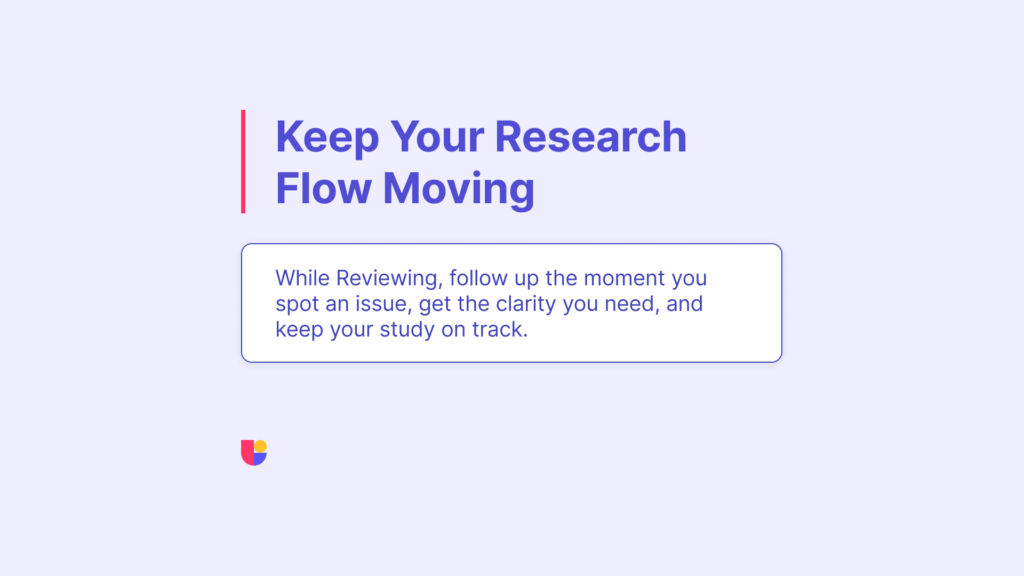
That’s why in-tool messaging matters. Useberry’s Participant Review doesn’t just add a feature; it removes roadblocks. When you can follow up on a submission the moment you review it, without leaving the platform, your workflow stays focused. You don’t lose momentum. You don’t delay reporting. You just get the clarity you need and keep moving forward.
In summary
Being able to communicate directly with participants after a study makes remote UX research feel more like a real conversation and less like a one-way trip. It helps researchers stay confident in their data and helps participants feel like their input actually matters. Isn’t that the kind of research everyone wants to be part of?
Start Messaging Participants Today
Turn unclear submissions into confident findings with built-in participant messaging.


